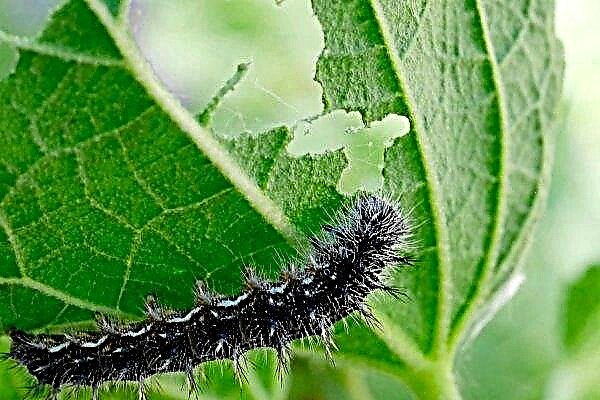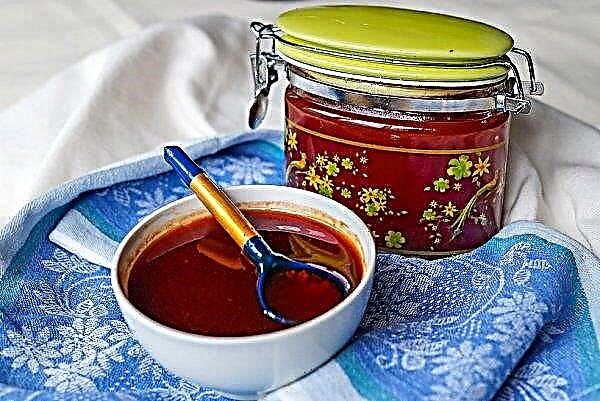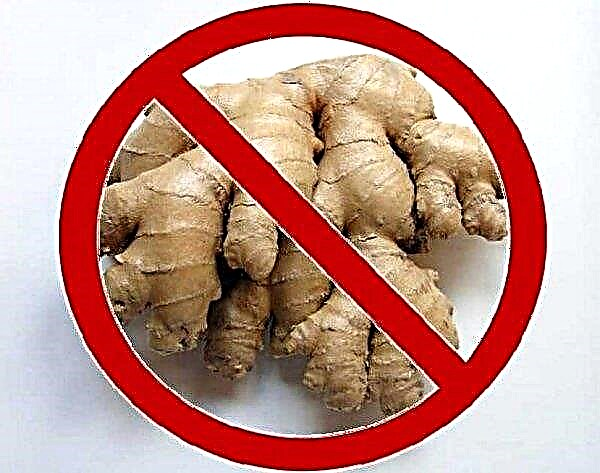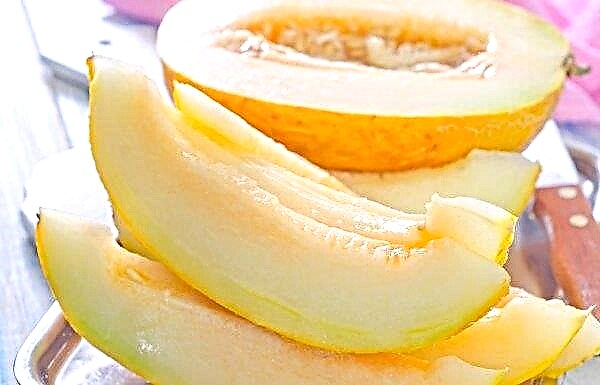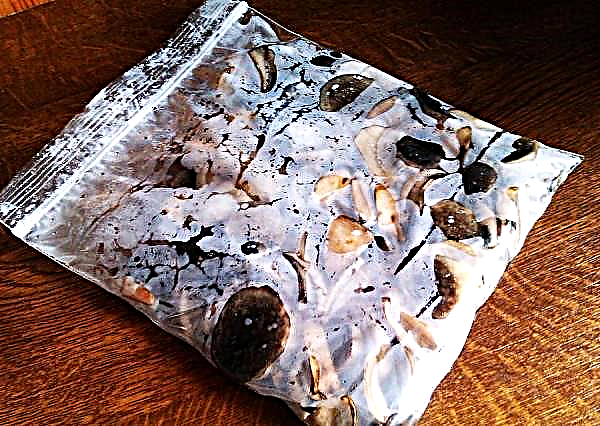Experienced gardeners know that at different periods of development, tomatoes need different nutrients. Improper feeding can harm and deprive the crop. From the article you will find out whether tomatoes need to be fertilized, and how and what is best done when the fruits ripen.
Why fertilize tomatoes during fruiting
The stay of tomatoes in the garden is divided into 3 stages:
- the vegetation period of seedlings after transplantation;
- bloom;
- fruiting.
 A great need for additional nutrition is experienced by tomatoes growing in greenhouse conditions. Due to an excess of heat and increased humidity, the bushes are covered with an excessive amount of leaves, and they are not able to give a full crop. Mineral and organic fertilizers will help to correct the situation.
A great need for additional nutrition is experienced by tomatoes growing in greenhouse conditions. Due to an excess of heat and increased humidity, the bushes are covered with an excessive amount of leaves, and they are not able to give a full crop. Mineral and organic fertilizers will help to correct the situation.When choosing fertilizers, you need to pay attention to the composition. It would be wrong to fertilize the fruiting tomatoes with nitrogen, since it stimulates the development of green mass. The bushes will have gorgeous foliage, but at the same time be poor in fruit (or generally barren).
When tomatoes form and ripen on the branches, plants need more phosphorus, potassium, boron, iodine and manganese. With a lack of these elements (especially phosphorus and potassium), this is observed:Important! Nitrogen introduced into the soil during fruit ripening can increase their size. But, accumulating in tomatoes, it poses a threat to human health.
- the leaves on the bushes turn yellow and twist;
- flowering and ovary formation is delayed;
- tomatoes ripen slowly.

Types of fertilizers
The composition of the fertilizer is divided into:
- mineral (from chemical elements);
- organic (from natural ingredients).
By the method of feeding, there are:
- root (introduced at the root);
- foliar (stalks and leaves are sprayed).

Mineral
Mineral fertilizers that are applied during the fruiting period of tomatoes include:
- superphosphate - phosphorus top dressing, which has a multifaceted effect: promotes the development of the root system of tomatoes, positively affects the metabolism, increases the quantity and quality of the crop;
- nitrophoska - complex mineral fertilizer, the main elements of which are nitrogen, phosphorus and potassium in different proportions. Use instead of superphosphate;
- potassium sulfate - inorganic fertilizer, which in combination with phosphorus and nitrogen preparations effectively improves the quality of the crop;
- boric acid - a mineral fertilizer containing boron. It is necessary for a good harvest, protects against diseases. It is used together with other natural and chemical agents.
Feeding methods are as follows:
- nitrofosku (1 tbsp. l.) and dry sodium humate (1 tsp.) to dissolve in water (10 l). Watering under the root;
- superphosphate (2 tbsp. l.) and liquid humate (1 tbsp. l.) stir in water (10 l.). Water to the very root.

Organic
Supporters of a healthy crop prefer to use non-chemical natural nutrition. It can be:
- humates of sodium and potassium - growth stimulants that are made from manure, silt, peat, plant waste; improve the quality and presentation of the crop;
- auxins - the phytohormones that underlie the Kornevin preparation accelerate the setting and ripening of tomatoes; non-toxic, do not accumulate in fruits;
- yeast - living microorganisms, which, getting into the soil, saturate it with oxygen, interact with soil microorganisms and activate their work, which remarkably affects the growth of bushes and fruit setting;
- ashobtained from trees contains potassium, phosphorus, calcium, magnesium and many other valuable nutrients, thanks to which tomatoes are poured. Used as an aqueous solution.
They feed plants like this:
- yeast (50 g) dissolved in warm water (10 l). You can add an herbal solution (from nettle) and wood ash. Insist 2 hours, pouring under the root (1 liter under the bush);
- Pour wood ash (2 L) with hot water (5 L) and mix. When it cools, add water to fill a 10-liter bucket. Add iodine (1 bottle) and boric acid (10 g). Insist a day. The resulting mixture is again diluted with water (1: 10) and poured 1 liter under the bush.

The use of folk remedies
The nutritional composition for tomatoes can be prepared independently from improvised ingredients. Often recipes are used that combine organic and mineral components. Here are some of them:
- In a solution of manure (1: 6) or chicken droppings (1:20) add the drug “Solution” or “Kemira” (1 tbsp. Per 10 l), potassium permanganate and vitriol (1 g each). Pour 1.5 l of fertilizing under low bushes, and up to 2.5 l under tall bushes.
- At the very beginning, iodine is added to 1 liter of serum (20 drops). Then the resulting mixture is dissolved in water (20 l). The solution is used for foliar top dressing by spraying bushes from a spray bottle.
- Mix milk (1 l), iodine (5 drops) and water (5 l). Spray in the evening. Fruiting is stimulated and protection against late blight is created.
Important! Any fertilizer should be applied only after a good watering of all tomato bushes.
Fertilization dates
Tomatoes need to be fertilized, adhering to deadlines that depend on the variety and stage of development of the plant. Especially greenhouse tomatoes need nutrition.  For the season, it is necessary to carry out 3 or 4 scheduled dressings:
For the season, it is necessary to carry out 3 or 4 scheduled dressings:
- Fertilizer with nitrogen fertilizing 10 - 15 days after transplanting seedlings into the greenhouse. Some gardeners are watered with fertilizer 2 times before flowering: the second time - two weeks after the first feeding. Thanks to this, the bushes grow strong, they are covered with beautiful foliage.
- After the beginning of flowering, you need to water phosphorus-potassium mineral or organic fertilizers under the root. This will contribute to abundant flowering and fruit setting.
- During the fruiting period, also feed fertilizers with phosphorus and potassium content for better filling and ripening.
Did you know? Drinking 2 cups of tomato juice per day, you can replenish your body with a daily intake of vitamin C.
Technology and basic rules for feeding tomatoes
The fertilizer application technology is very simple:
- Prepare a nutrient solution according to one of the recipes.
- The earth should be moist, if necessary it should be watered.
- Under each bush, pour the right amount of diluted fertilizer. The dosage depends on the variety of tomatoes and the type of top dressing: from 0.5 l to 2.5 l.
- Spraying with foliar top dressing is carried out in 1 - 2 weeks after root fertilizer.
 When fertilizing, you should adhere to certain rules:
When fertilizing, you should adhere to certain rules:- dressing under the root is carried out 3-4 times per season only in moist ground;
- foliar fertilizer alternates with root, and in greenhouse conditions of high humidity - 1 time per month;
- spraying plants in a greenhouse in the morning, evening or afternoon in cloudy weather;
- after spraying, the greenhouse is left open so that the liquid on the plants has time to dry before nightfall.
Features of watering tomatoes
Even timely and proper top dressing will not give the desired result if the plants do not receive the necessary amount of moisture (and not only its lack, but also an overabundance can harm).
Here are some guidelines for watering greenhouse tomatoes:
- How often and how much. The older the tomato bush, the more often it needs to be watered, but with less water. Before flowering, you can pour 5 liters under the bush once a week, and fruiting plants are best watered twice a week, but 1 liter each.
- What time of day. Greenhouse tomatoes in hot weather can be watered during the day, in the morning and evening. When it is cool outside, watering is best done during the day.
- What to water: warm water heated in the sun.
- How to water. Pour water under the root, trying not to fall on the leaves. The ideal watering option is drip irrigation.
Important! Twisted leaves on the bushes say they urgently need to be watered. And cracked fruits signal an excess of moisture, the amount of which needs to be reduced.

Useful Tips
The following recommendations will come in handy for any gardener who wants to get a quantitative and high-quality tomato crop in greenhouse conditions:
- always adhere to the dosages indicated on the packaging of store products, and follow the advice of specialists. To go too far with fertilizer means harm;
- in a greenhouse, plants grow faster than in open ground. If the bush has grown large, covered with dense foliage, and the ovary is small (or not at all), urgently need to stop feeding with nitrogen;
- monitor the condition of the tomatoes to determine whether they need additional nutrition or not.
Tomatoes at the fruiting stage are in particular need of fertilizers. If they are fed correctly and on time, then the quality and quantity of the crop will certainly increase.Did you know? When you need to cheer up, but you don’t have chocolate at hand, you can eat a tomato, as it also contains a lot of seratonin, or the hormone of happiness.

